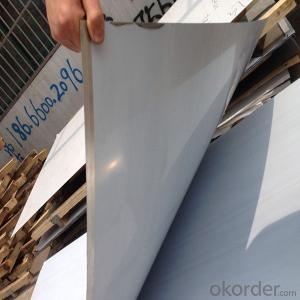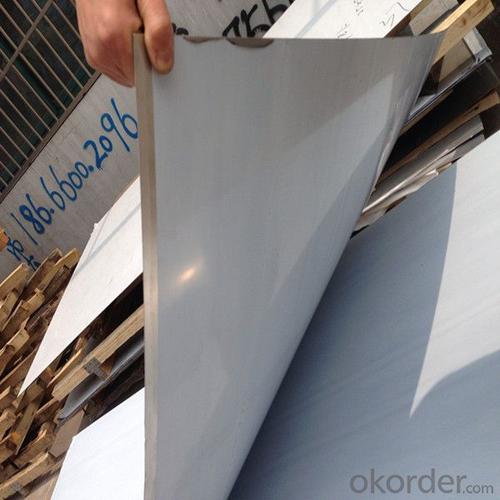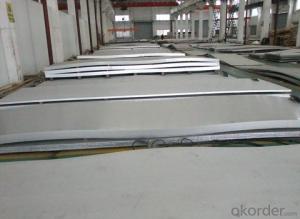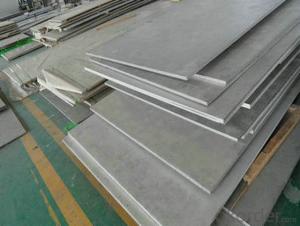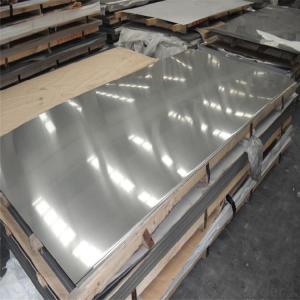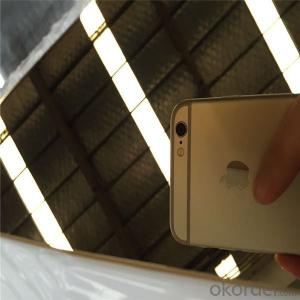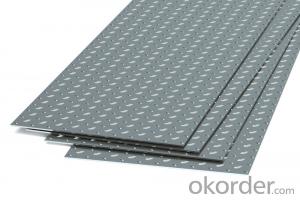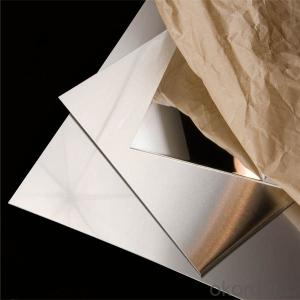EN1.4301 ASTM 304 Stainless Steel Sheet 2B
- Loading Port:
- Shanghai
- Payment Terms:
- TT OR LC
- Min Order Qty:
- 3 m.t.
- Supply Capability:
- 1000 m.t./month
OKorder Service Pledge
OKorder Financial Service
You Might Also Like
Specification
EN1.4301 ASTM 304 stainless steel sheet cold rolled building material
Product Description
Specifications of EN1.4301 stainless steel sheet
Item: EN1.4301 ASTM 304 Stainless Steel Sheet
New & Fresh Stocks!!!
Best & Lowest price!!!
Thick: 0.3mm / 0.5mm / 0.8mm / 1.0mm / 1.5mm / 2.0mm / 2.5mm / 3.0mm / 4-110mm
Width: 1000mm, 1220mm(1219mm). 1250mm, 1500mm, 1524mm, 1800mm, 2000mm
Length: 2000mm, 2440mm(2438mm), 3000mm, 6000mm, special size can be customized
Product Uses
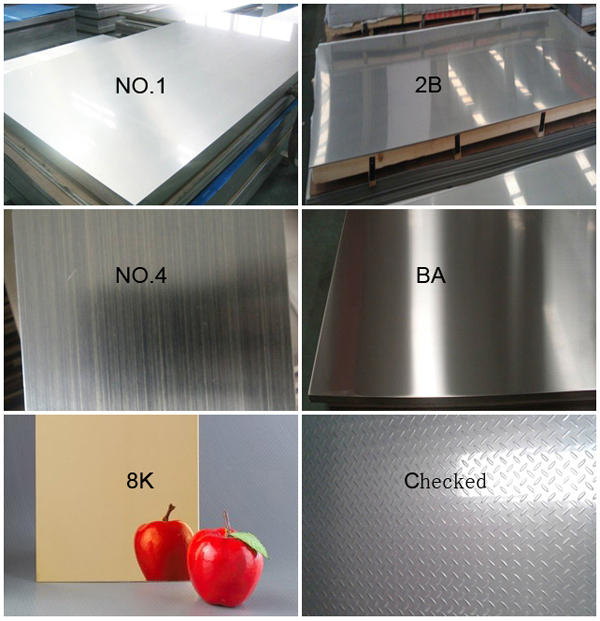
Surface finish of EN1.4301 stainless steel sheet
Finish | Thickness | Characteristics |
No. 1 | 2.0mm ~12.0mm | Surface finished by hot-rolling, annealing and pickling, characterized by white pickled surface. |
2B | 0.3mm ~3.0mm | Finished by heat treatment, pickling after cold rolling, followed by skin pass line to be brighter. |
BA | 0.3mm ~1.5mm | Processed with bright heat treatment after cold rolling. |
No. 4 | 0.4mm ~3.0mm | Polishing with No. 150 to No.180 abrasives. The most popular finishes. |
HL | 0.4mm ~3.0mm | Finished by continuous polishing streaks by using abrasive of suitable grain size. |
SB | 0.4mm ~3.0mm | Polishing with No. 150 to No. 180 Scotch-Brite abrasives. |
Packaging & Shipping
1.Packaging:All products are packaged according to the Standard export packing.In order to prevent friction damage and water erosion and so on.
2.Shipping: Ocean transportation,land transportation or air transportation.
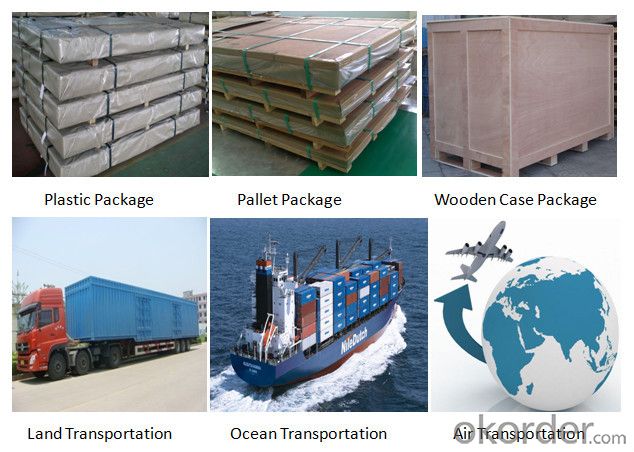
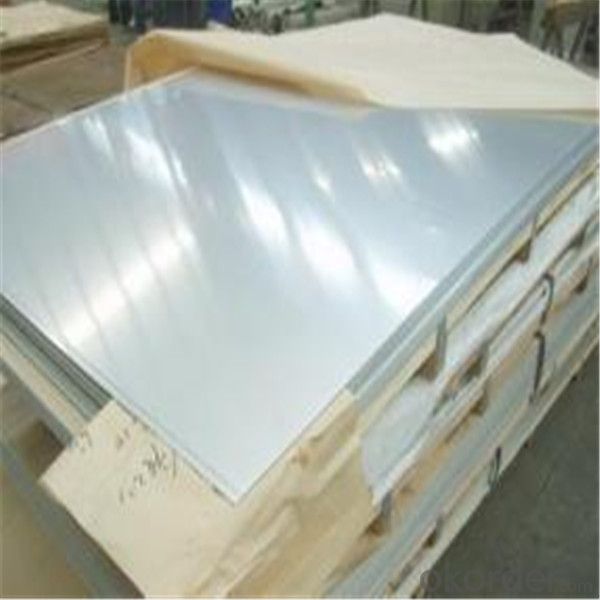

- Q: What are the different types of stainless steel sheets?
- There are several different types of stainless steel sheets, including austenitic, ferritic, martensitic, and duplex stainless steel sheets. Each type has unique properties and is suitable for different applications.
- Q: Can stainless steel sheets be used for decorative staircases?
- Yes, stainless steel sheets can be used for decorative staircases. Stainless steel is a versatile material that offers a modern and sleek appearance, making it an ideal choice for creating decorative staircases. Its durability, resistance to corrosion, and ability to be shaped into various designs make stainless steel sheets a popular option for adding a stylish touch to staircases.
- Q: Are stainless steel sheets suitable for desalination plants?
- Yes, stainless steel sheets are suitable for desalination plants. Stainless steel is highly corrosion resistant, making it ideal for applications in saltwater environments. It can withstand the harsh conditions of desalination plants, including exposure to saltwater, high temperatures, and pressure. Additionally, stainless steel is a durable and hygienic material, making it an excellent choice for desalination plant components such as heat exchangers, pipes, and tanks.
- Q: Can stainless steel sheets be used for food processing or medical applications?
- Stainless steel sheets can be utilized in both food processing and medical applications. This material is highly durable and resistant to corrosion, making it an ideal option for industries that prioritize hygiene and cleanliness. In the food processing sector, stainless steel sheets are commonly employed for various purposes, including countertops, work surfaces, sinks, storage containers, and equipment. Its non-porous surface inhibits the growth of bacteria and simplifies the process of cleaning and sanitizing. Likewise, stainless steel sheets are extensively used in medical applications due to their exceptional resistance to corrosion, heat, and chemicals. They are employed in medical instruments, surgical equipment, implants, and other medical devices that necessitate high levels of cleanliness and sterilization. Stainless steel's biocompatibility and resistance to body fluids also make it suitable for implantable devices such as pacemakers, joint replacements, and dental implants. In summary, stainless steel sheets are the preferred choice for food processing and medical applications owing to their hygienic properties, durability, and corrosion resistance.
- Q: How do you prevent galvanic corrosion on stainless steel sheets?
- There are several ways to prevent galvanic corrosion on stainless steel sheets: 1. Compatibility of materials: Make sure that any other metals or materials that come into contact with the stainless steel sheets are also resistant to corrosion. Avoid coupling stainless steel with dissimilar metals, especially those with a higher electrochemical potential difference, as this can speed up galvanic corrosion. 2. Insulation and isolation: Create a physical barrier or layer of insulation between the stainless steel sheets and any dissimilar metals. This can be achieved by using gaskets, seals, or non-conductive coatings. By preventing direct contact between the stainless steel and other metals, the risk of galvanic corrosion is reduced. 3. Proper installation: During installation, ensure that the stainless steel sheets are properly grounded and separated from other metals. This helps to minimize the potential for galvanic corrosion by reducing the flow of electrical currents between dissimilar metals. 4. Regular maintenance: Regularly inspect and clean the stainless steel sheets to remove any contaminants or foreign materials that could contribute to galvanic corrosion. This includes removing any rust, scale, or deposits that may have formed on the surface. 5. Cathodic protection: Consider implementing a cathodic protection system, such as sacrificial anodes or impressed current systems, to provide an extra layer of protection against galvanic corrosion. These systems work by introducing a sacrificial metal that corrodes instead of the stainless steel, effectively preventing corrosion of the stainless steel sheets. By implementing these preventive measures, it is possible to significantly reduce the risk of galvanic corrosion on stainless steel sheets and extend their lifespan.
- Q: What are the different types of surface treatments for stainless steel sheets?
- There are several types of surface treatments for stainless steel sheets, including brushing, grinding, polishing, and coating. Brushing creates a textured finish, grinding removes imperfections, polishing enhances shine, and coating adds a layer of protection.
- Q: Can stainless steel sheets be etched or engraved?
- Yes, stainless steel sheets can be etched or engraved. Etching and engraving are common methods used to create designs, patterns, and text on stainless steel surfaces. These techniques involve removing a thin layer of the metal to create the desired design. Etching can be done using chemicals or by using a laser, while engraving is typically done using a mechanical tool or laser. The etching or engraving process can create intricate and detailed designs on the stainless steel sheets, making them suitable for a wide range of applications such as signage, decorative panels, nameplates, and more.
- Q: Are stainless steel sheets resistant to nitric acid?
- Stainless steel sheets are typically known for their resistance to nitric acid. Nitric acid, an extremely powerful oxidizing agent, has the ability to corrode and dissolve numerous metals. However, stainless steel contains a significant amount of chromium, which creates a protective oxide layer on the material's surface. This oxide layer acts as a barrier, effectively preventing direct contact between the nitric acid and stainless steel, thereby providing corrosion resistance. It is crucial to acknowledge that the level of resistance may differ depending on various factors such as the grade and composition of the stainless steel, as well as the nitric acid's concentration and temperature.
- Q: What is the maximum thickness of stainless steel sheets for bending?
- Factors such as the type of stainless steel, the bending method, and available equipment determine the maximum thickness for bending stainless steel sheets. Typically, sheets up to 3/16 inch (4.76mm) thick can be easily bent using common techniques and equipment. Nevertheless, thicker sheets may necessitate specialized machinery or processes like hydraulic or press braking to achieve the desired bend. To determine the maximum thickness that can be effectively bent for a specific application, it is crucial to consult with a metal fabrication expert or refer to specific bending guidelines provided by the stainless steel manufacturer.
- Q: Can stainless steel sheets be used for jewelry making?
- Yes, stainless steel sheets can be used for jewelry making. Stainless steel is a popular material for creating jewelry due to its durability, resistance to tarnishing, and hypoallergenic properties. It can be easily cut, shaped, and textured to create unique designs. Stainless steel sheets can be used to make various types of jewelry, including earrings, rings, bracelets, pendants, and even intricate chains. Additionally, stainless steel jewelry is often more affordable compared to precious metals like gold or silver, making it a popular choice for budget-conscious individuals or those looking for a more modern and industrial aesthetic.
Send your message to us
EN1.4301 ASTM 304 Stainless Steel Sheet 2B
- Loading Port:
- Shanghai
- Payment Terms:
- TT OR LC
- Min Order Qty:
- 3 m.t.
- Supply Capability:
- 1000 m.t./month
OKorder Service Pledge
OKorder Financial Service
Similar products
Hot products
Hot Searches
Related keywords
